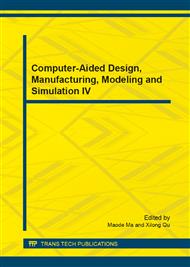p.1098
p.1104
p.1110
p.1115
p.1120
p.1128
p.1131
p.1136
p.1141
Research on the Preparation of Organic Modified Bentonite and the Control of Biological Invasion in Ballast Water
Abstract:
In this research, the effect of modified bentonite on removing harmful organisms in ballast water was discussed using HDTMA+ modified bentonite as flocculating material, and Alexandrium tamarense, Nitzchia closterium, and Photobacterium phosphoreum as the objects of harmful organisms, and also through an observation of the reaction mechanism between HDTMA+ and bentonite with Fourier transform infrared spectroscopy (FTIR). The result showed that there was an effective combination of HDTMA+ with bentonite, and the modified organic bentonite possessed a powerful ability to remove harmful organisms. The removal rate against Alexandrium tamarense within 24h was greater than 85% if the dosage of the organic bentonite was 0.03 g/L; the removal rate against Nitzchia closterium was approximate to 80% if the dosage was 0.06 g/L; the luminous intensity could not be displayed by luminescent bacteria under the condition of concentration 0.30 g/L, and also the original soil with modification did not shown a significant removal effect under the same dosage. Therefore, it was concluded that the conditions such as aging time, organic bentonite’s particle size, and HDTMA+ dosage were the important factors affecting the harmful biological removal efficiency.
Info:
Periodical:
Pages:
1136-1140
Citation:
Online since:
October 2014
Authors:
Keywords:
Price:
Сopyright:
© 2014 Trans Tech Publications Ltd. All Rights Reserved
Share:
Citation:


